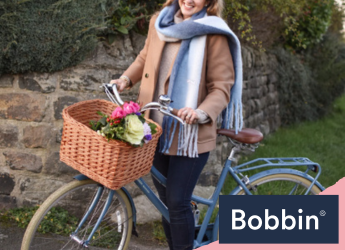How to Learn to Ride a Bike as an Adult
Cycling offers many benefits for adults, and it’s never too late to learn how to ride a bike. We’re here to help you on this journey, whether it’s your first time pedalling or you’re returning to your adult bike after years. Ready for a quick cycling tutorial?
Step 1: Get an Adult Bike that Fits You
This is the most important step in learning to cycle—riding a bike that’s perfectly sized for you. Here’s what that means:
- The overall size of the bike frame should match your height and leg length—neither too large nor too small.
- The saddle should be positioned so your legs are at the right angle when pedalling—not too high or too low.
- You should be able to reach the handlebars comfortably—not too far or too close.
- The distance between the saddle and handlebars should suit your arm length—not stretched too far or feeling cramped.
The wheel size matters, too, and depends on the terrain and your riding style. For instance, 700c or 29” wheels are common for most adult bikes and work well for commuting or tackling rougher terrain.
We recommend consulting a bike fitting professional to get accurate measurements. They can help adjust everything, from the saddle to the handlebars, to suit your body and riding preferences. This ensures comfort and efficiency overall. For more detailed answers, check out this guide: What Bike Sizes Are Right for Adults?
Tip: If you’re shopping online, trusted stores like Bobbin include size guides and detailed specifications for their bikes. Always double-check these before making a purchase.
Step 2: Practise Getting On and Off the Bike
Once everything is set, your first task is to practise getting on and off your bike. This is a simple way to get used to handling the bike, keeping your balance, and building confidence before you start pedalling. In short, it makes the learning process less intimidating.
Start in a flat, open space. Stand next to your bike, hold the handlebars steady, and tilt the bike slightly towards you. Step over the frame and sit on the saddle, keeping one foot on the ground for balance.
When getting off, stop the bike, place one foot firmly on the ground, and step back over the frame. Apply the brakes when hopping on or off so the bike doesn’t roll or wobble.
Take your time until it feels natural—it’ll soon become second nature!
Step 3: Master the Brakes
Next, while off the bike, practise using the hand brakes to get a feel for how much pressure you need to slow down or stop. Walk your bike and squeeze both brake levers (the front and the rear) to see how they work. Just be careful not to grab them too hard, as it could make the bike tip forward. Practise this every 15 to 20 feet until you can do it smoothly.
Step 4: Try Coasting Without Pedals
Now it’s time to actually get on the bike and glide without using pedals. Sit on the saddle, lift your feet off the ground, and let the bike roll along. Try to keep your balance by taking a few longer running stride. As you get more comfortable, you’ll be able to coast for longer without needing to touch the ground. Practise this a few times.
Tips: As you get better at coasting, try adding turns to the mix, first turning right and left. Challenge yourself by doing large figure eights and making wide turns in both directions.
Step 5: Start Pedalling
Once you’ve got the hang of balancing while gliding and mastered braking, it’s time for the most exciting part: pedalling. Start in a stopped position, with one foot flat on the ground and the other foot on a pedal at the 1- to 2-o’clock position. Press down hard on the pedal to get the bike moving forward.
Alternatively, you can begin with one foot on the pedal in the down position and use your other foot to scoot, like you would on a scooter. Take a scooter step to build some speed, then find the second pedal and start pedalling. Don’t panic, and try not to look down at your feet because that tends to throw your balance off.
Once you’re able to pedal for longer, try adding turns to the mix, first turning right and left. Challenge yourself by doing large figure eights and making wide turns in both directions.
Tip: As you’re learning, avoid pedalling through the entire turn, or you’ll end up going too fast to make a controlled turn. Instead, anticipate the turn, ease off the pedal and coast through it. Once you’re through the turn, then start pedalling again.
And That’s How You Teach an Adult to Ride a Bike
Age is no barrier to being a beginner. First, get a bike that fits you. Next, practise getting on and off once your chosen bike is set. Master the brakes, then try gliding without pedals. Finally, start pedalling. Don’t forget to wear your cycling helmet!
With these steps and a bit of patience, you can pedal your way confidently on two wheels. Then, you’ll be ready to teach your little one with this guide: How to Teach a Kid to Ride a Bike in 5 Minutes: Easy Steps!








